

Mingan Archipelago National Park Reserve in Quebec is home to the largest concentration of erosion monoliths in Canada. These photogenic monsters were over 465 million years in the making, as limestone sedimentary rock was subjected to the elements such as freezing, being sunk underneath glaciers, and slowly rising from the sea as waters receded. Repeated freezing and thawing, along with wave action, tides, and wind over the centuries, continued to sculpt Mother Nature’s magnificent works of art.
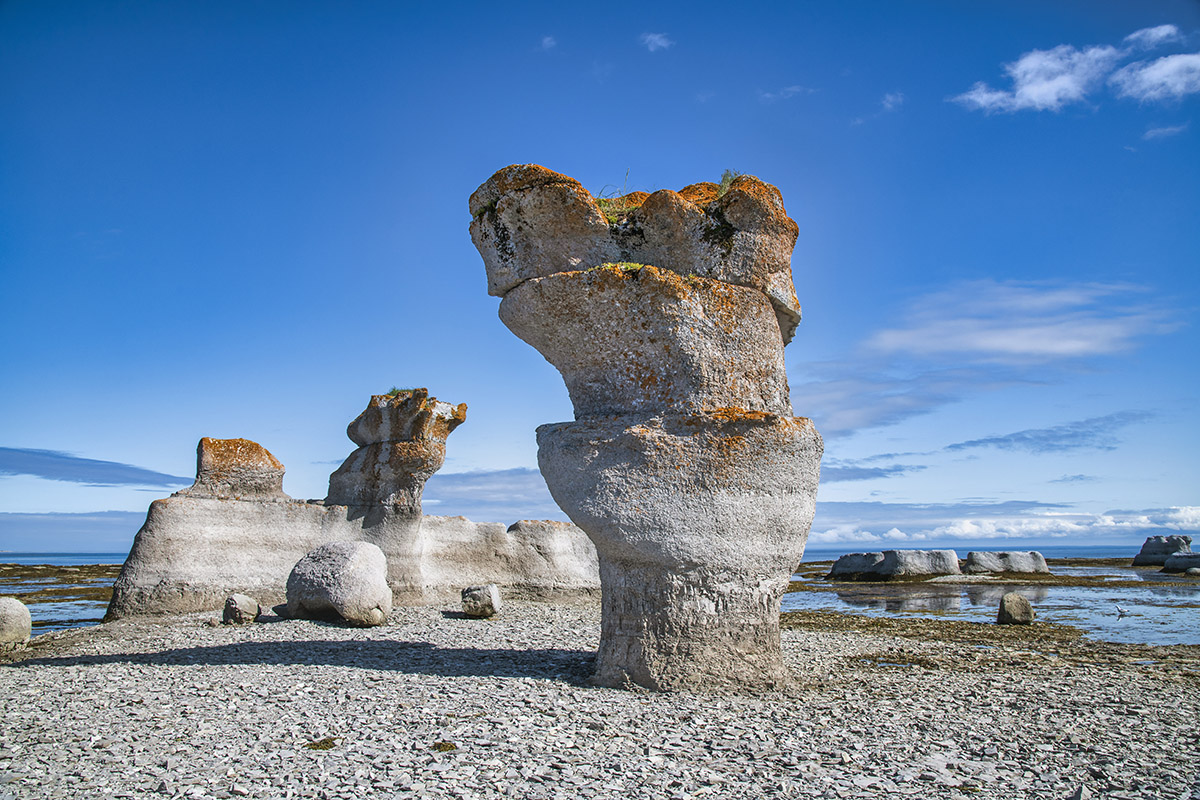
A monolith is a single upright rock, usually tall and narrow. While several here are single and freestanding, others might be considered monoliths in the making as cliff faces get eroded into a variety of bizarre shapes. To a photographer, they are just plain cool, offering a wealth of creative possibilities.
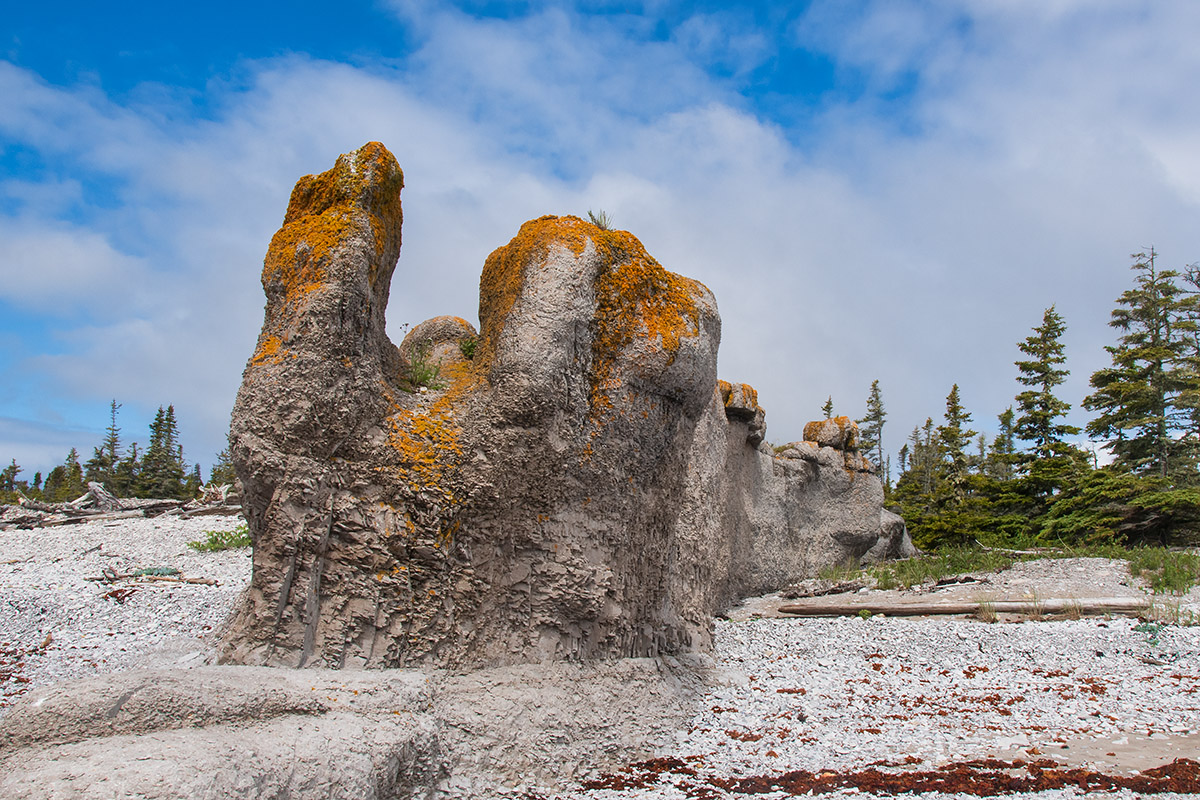
Where do we Find the Monoliths?
Consisting of about a thousand islands off the north shore of the St. Lawrence River, Mingan has a lot to offer, with such varied habitats as boreal forest, salt marshes, barren lands, rugged coastlines, and wildlife galore, including whales and amazing seabirds. But from a photographic standpoint, it’s the monoliths that really stand out
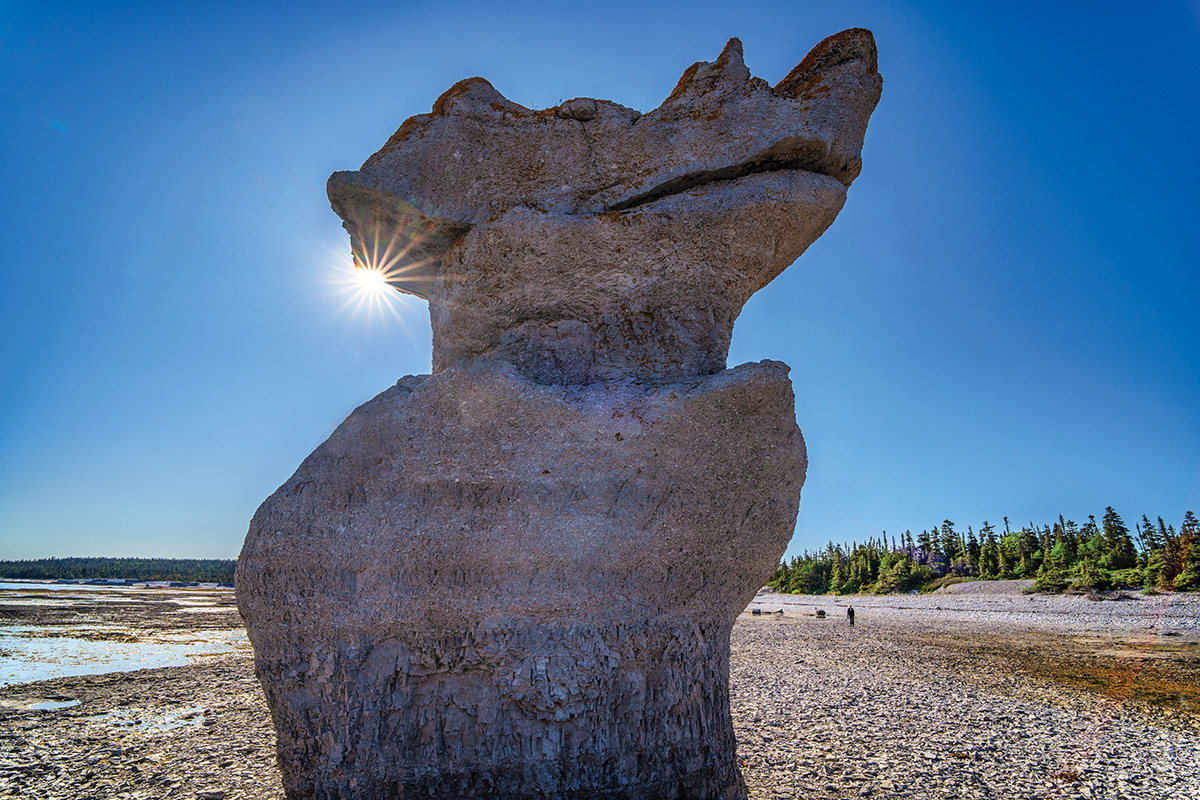
While various islands have monoliths, the two that stand out are Quarry Island and Niapiskau Island, which are next to each other. The jumping off point to visit these islands is the town of Havre St-Pierre, roughly 850 kilometres northeast of Quebec City. Getting there is half the fun as the highway skirts the scenic coastline of the Côte-Nord on the north shore of the St. Lawrence River.
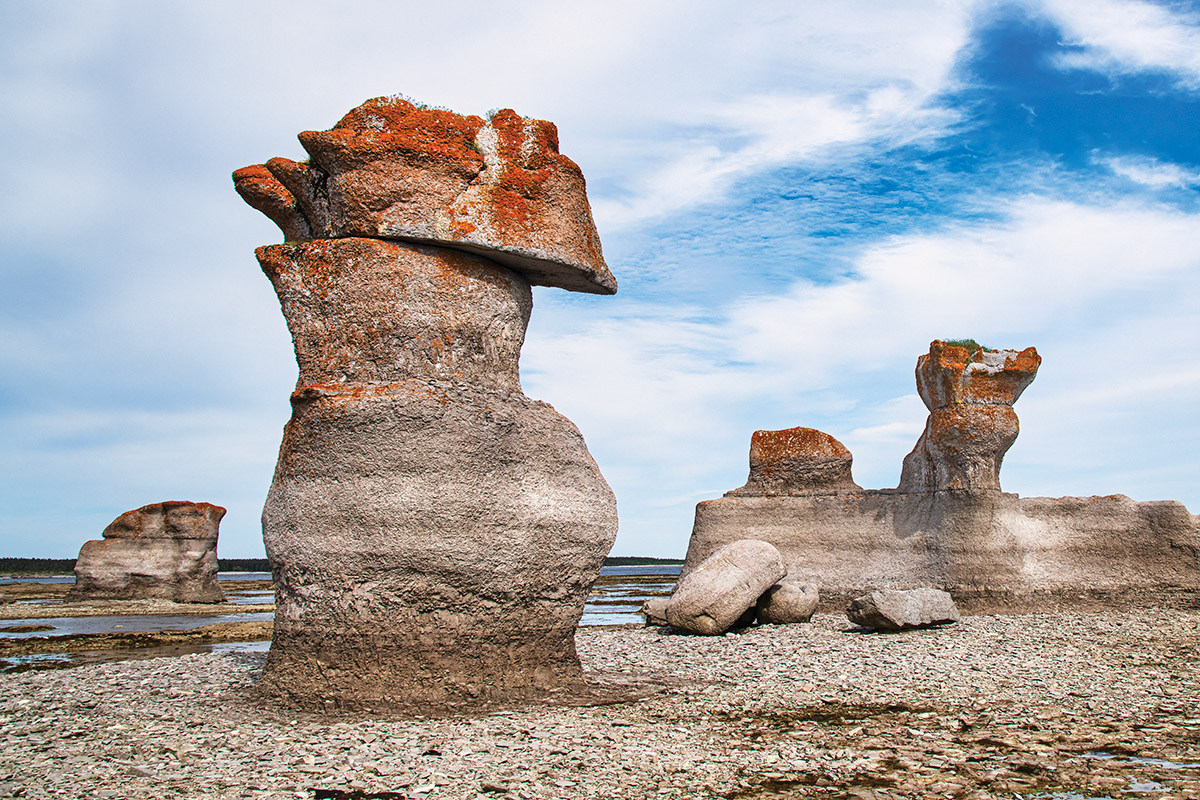
From Havre St-Pierre, boat services operated by Services Maritime Boréale shuttle visitors to the islands and offer organized excursions that stop at both islands. If you do opt to take a day excursion, consider taking one that allows the maximum amount of time on Quarry Island. More time is needed here than at Niapiskau Island.
The Monoliths of Quarry Island
Another option, and the one that we would recommend, is to stay at the campground on Quarry Island. Book these with Parks Canada Reservations. Besides normal campsites to pitch your tent, there are six oTENTiks, a ready-to-camp option similar to a small cabin, where you only need to bring your bedding and other supplies. We intend to follow up with a future posting on what it is like to camp on Quarry Island.
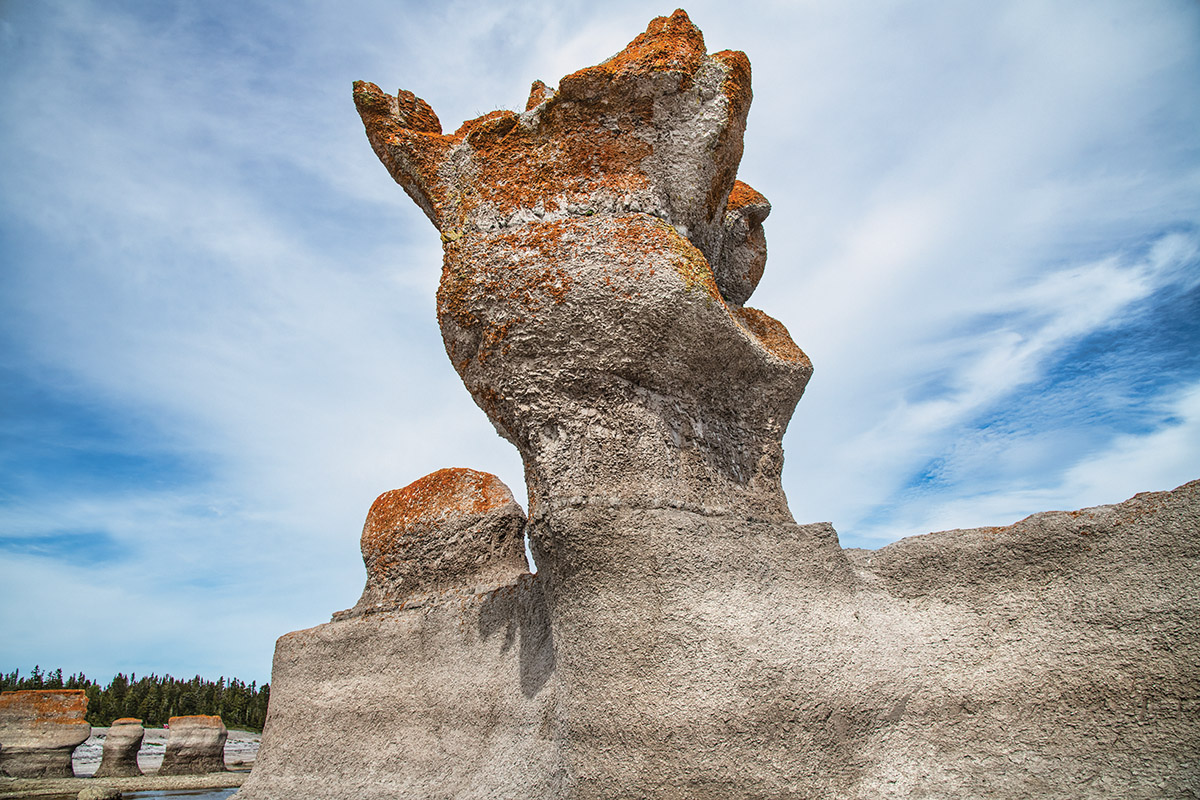
Staying for a couple of days, or preferably more, allows for a lot more flexibility. While it is possible to get to most of the main monoliths on a day excursion, you are at the mercy of the elements. You might experience ideal conditions, or you might find thick fog. Staying on the island opens up the possibility to see and photograph the monoliths under various conditions – sunlight, golden hour, cloud, fog, high tide, low tide – each offering something special.
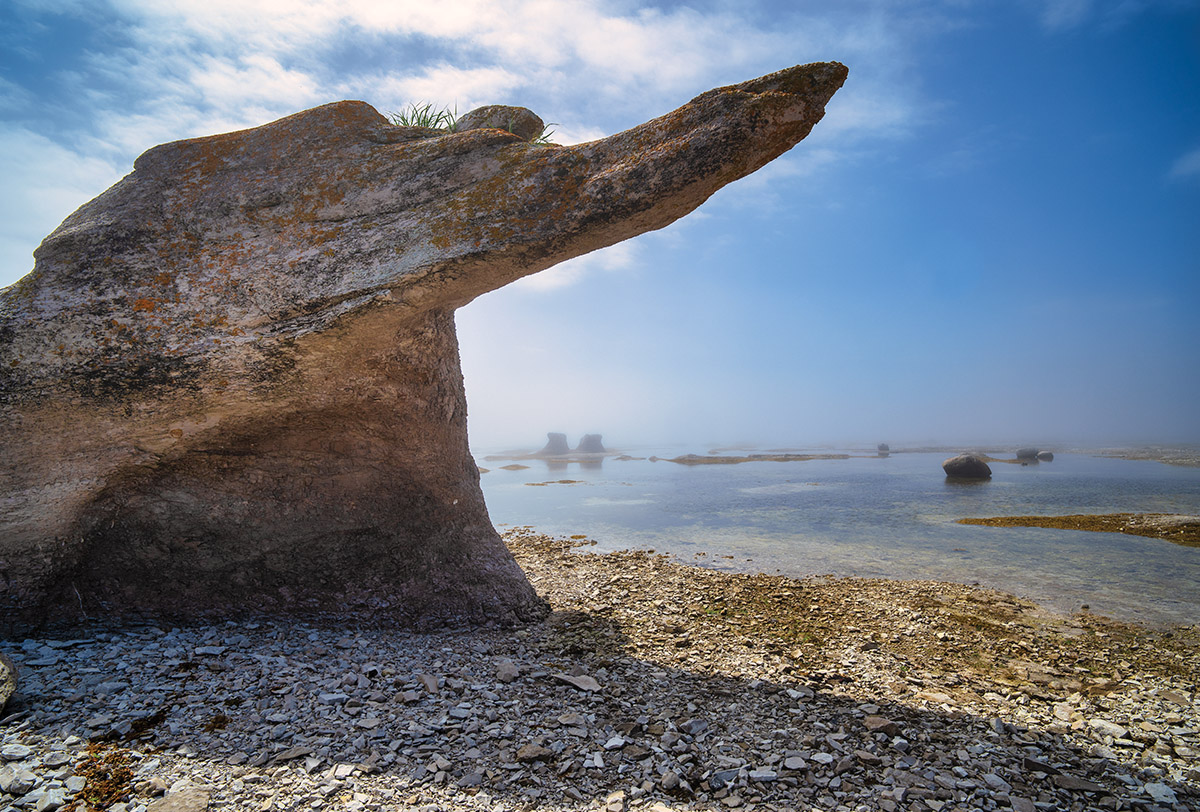
To see the main concentration of Quarry Island monoliths, take the 0.6 km trail through the forest that crosses the narrowest part of the island from the boat dock. The monoliths will be obvious to your left when you arrive at the other shore.
Seeing the Monoliths Under Different Conditions
At low tide, you can walk right out to and among the stone formations to get close-up shots. High tide creates a completely different scene. The bases of the monoliths are underwater, and you can’t get near. If the water is calm, you might want to try some long exposures to smooth out the water around the formations for some interesting perspectives. One evening during high tide, we had gorgeous golden hour light just before sunset that bathed the monoliths in a warm red glow. Taking long exposures of around 13 seconds resulted in some of our favourite images of the trip.
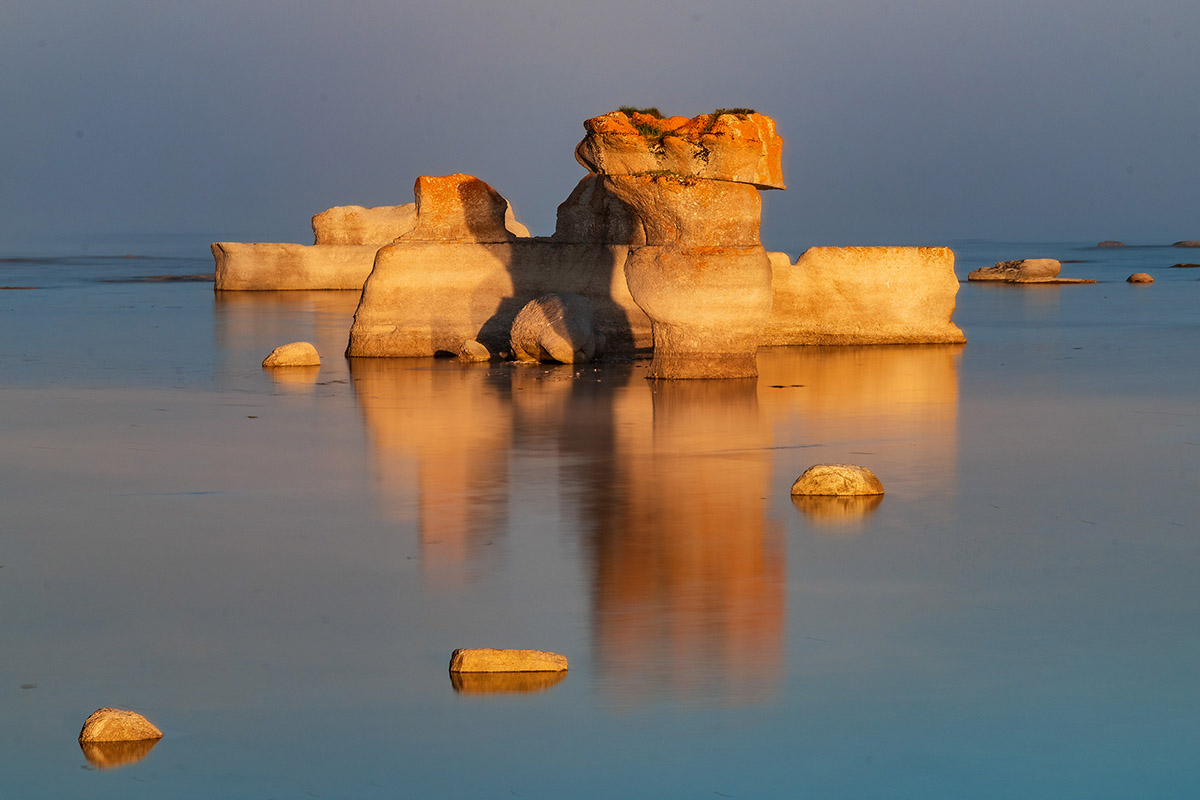
It would be disappointing to find thick fog when visiting the island for only an hour or two, but during a longer stay, some fog was a welcome diversion, adding to the variety. Fog gives the formations a more mysterious or surreal feel.

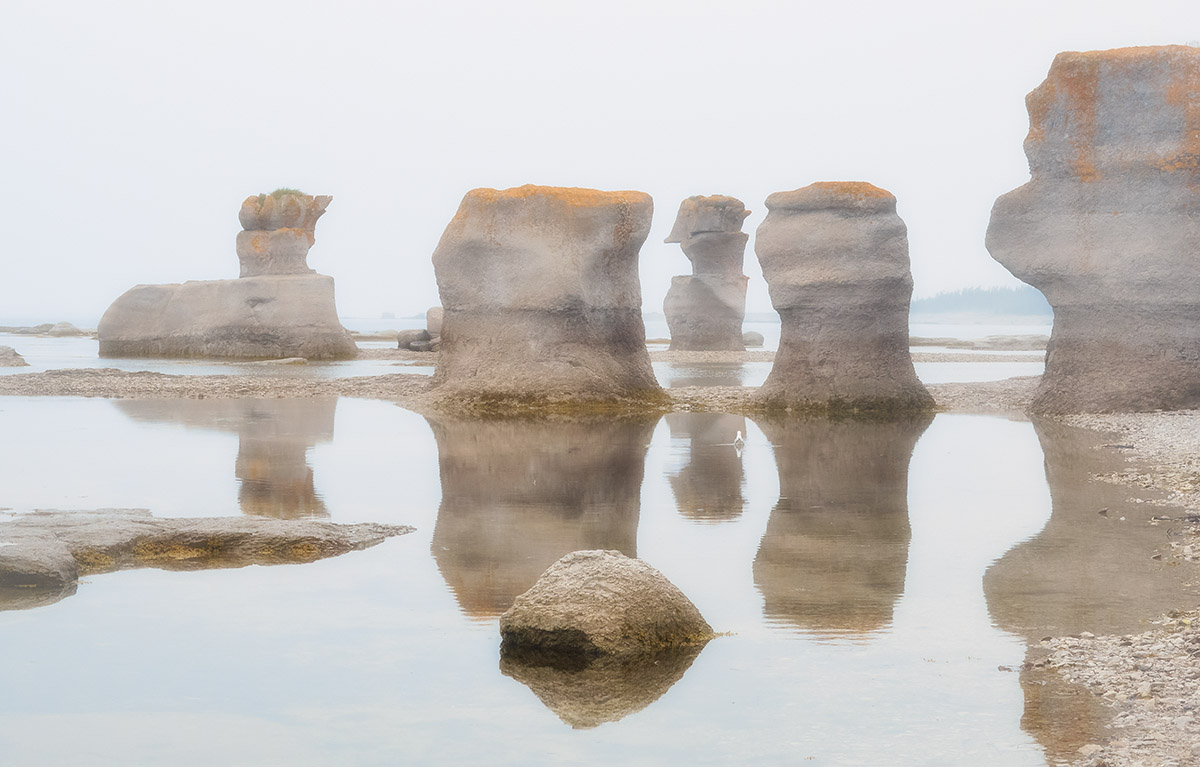
Another set of monoliths is reached by turning right when you come to the end of the cross-island path. You can see them farther in the distance. A lot fewer people visit these, but they are some of the most intriguing formations with some truly bizarre shapes. You can only get to these at low tide since water blocks the way at high tide.
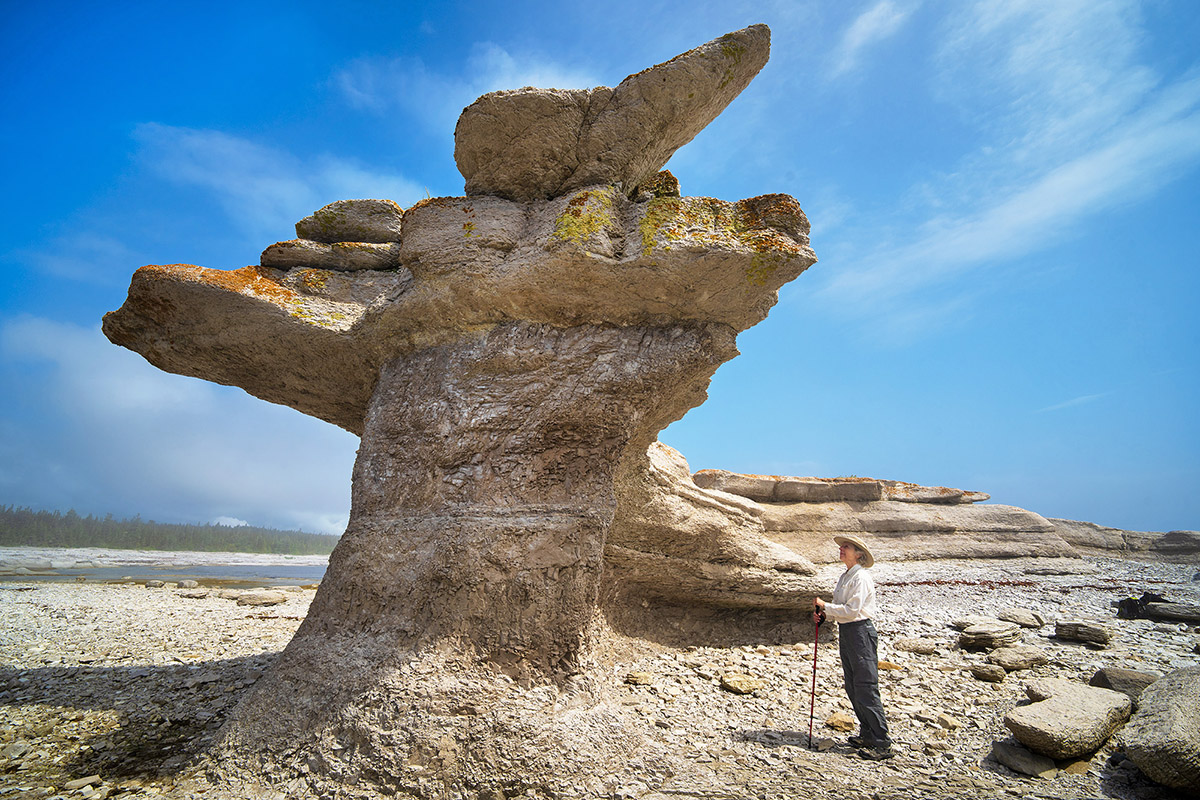
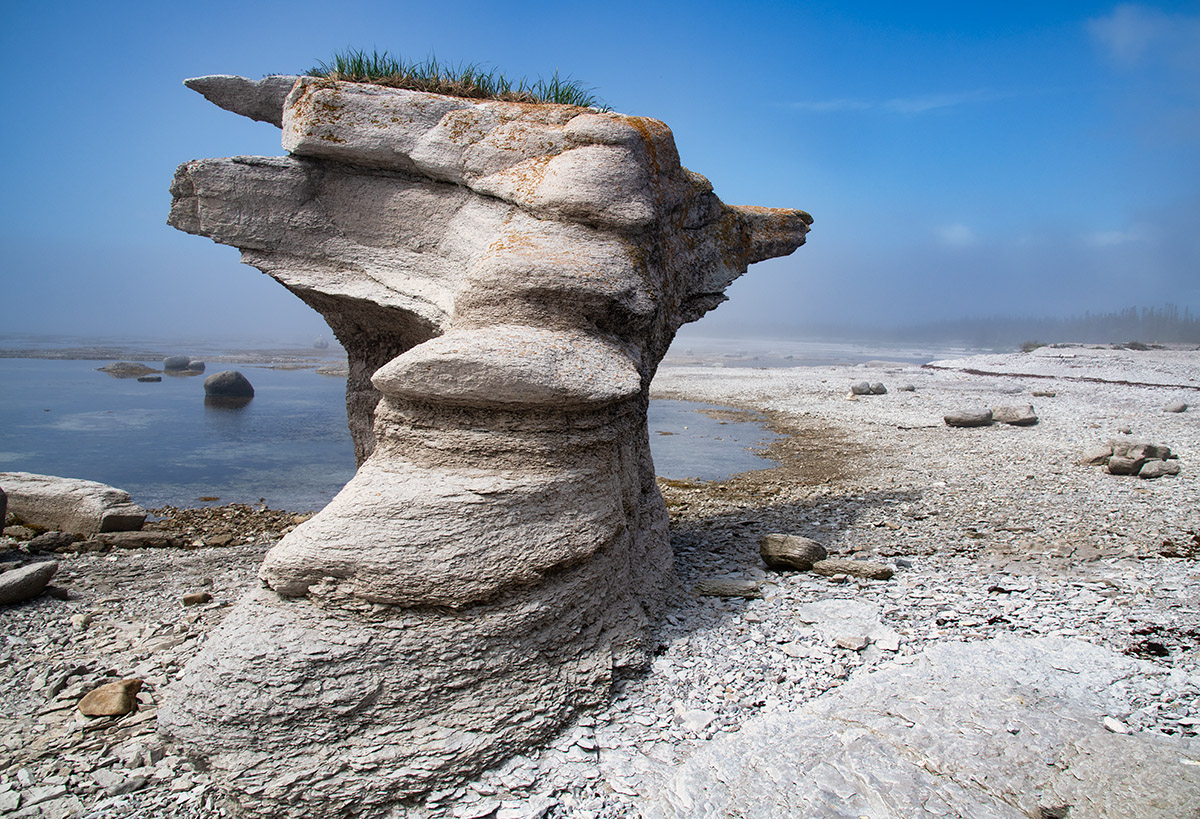
Niapiskau Island
Just to the east of Quarry Ialand, Niapiskau Island boasts some of the largest monoliths. They are clustered in a fairly compact area immediately next to the boat dock. These are truly impressive, especially when you get in close. A short boardwalk trail winds through some of the formations, and a raised platform provides a chance to see what they look like from on top.
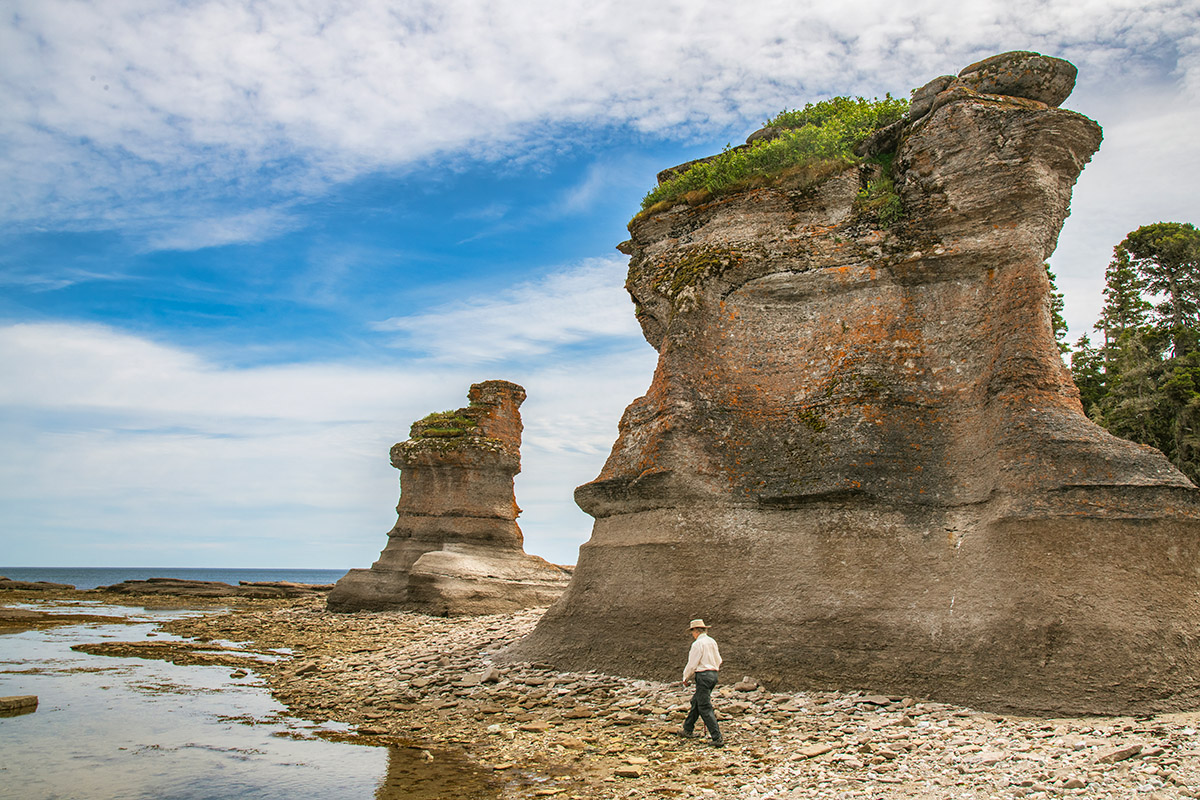
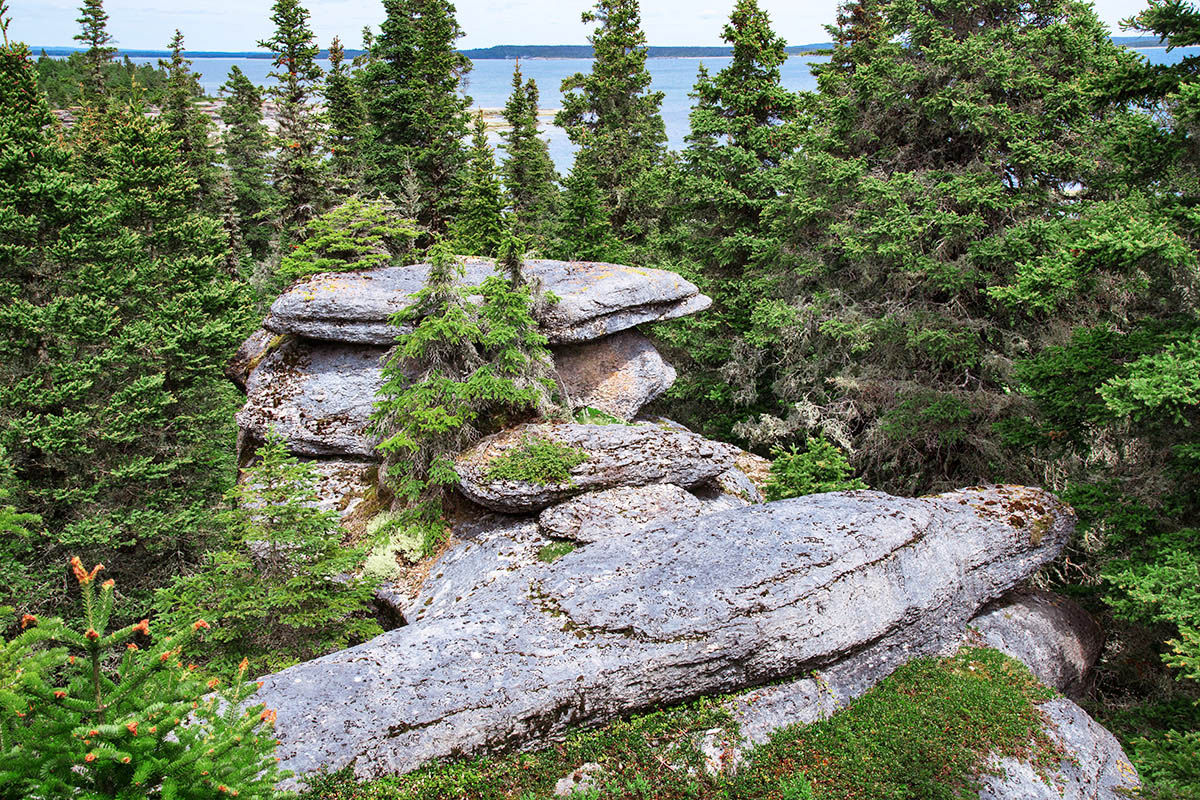
We visited Niapaskau Island on a day trip, although it would certainly be possible to camp here as well and have more time to experience different light conditions. However, the campground is on the opposite side of the island, accessed by the 4.1 km Samuel Trail. It’s a nice walk through the forest, past a salt marsh, and along the coastline, but it wouldn’t be practical to go back and forth several times like we did on Quarry Island. One section of the trail could also be a problem during high tide.
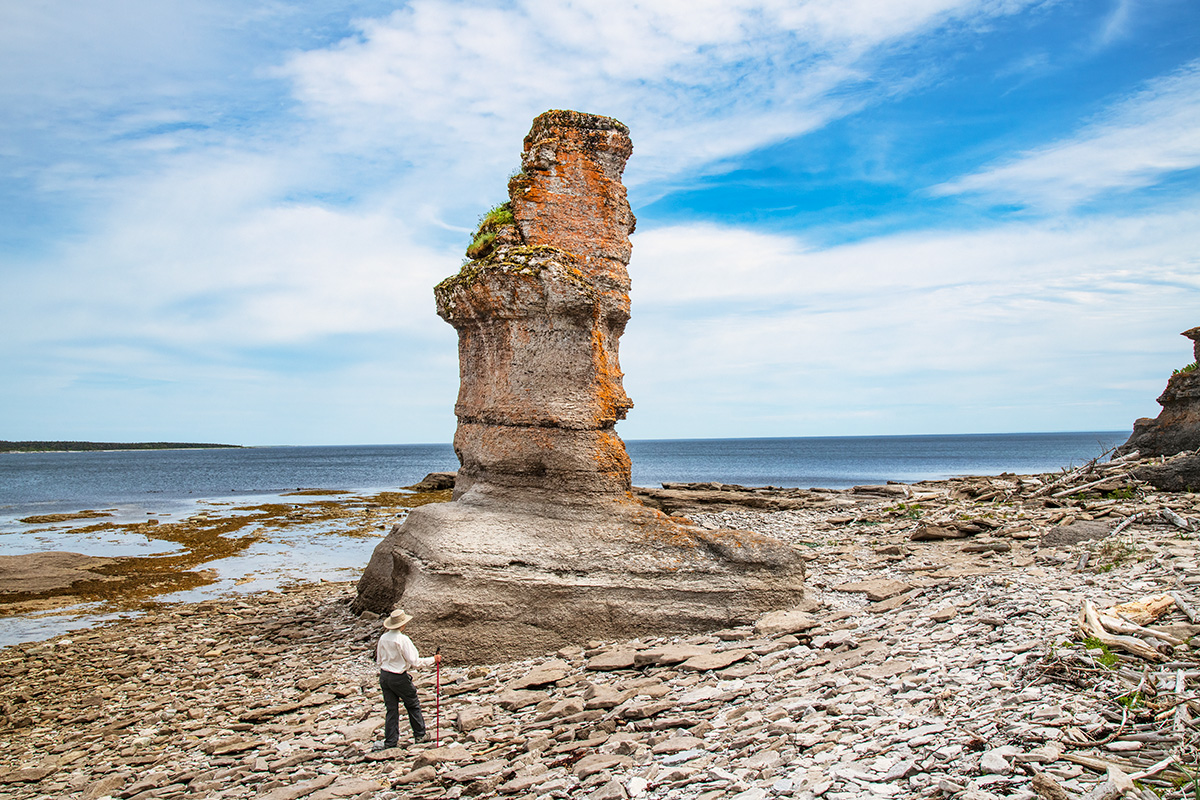
Photo equipment
We used a 28-120mm zoom for a majority of the shots, and a 17mm for some of the close-ups of the monoliths. We also had a 70-200mm zoom, used mostly for monoliths at high tide when you can’t get as close and need more reach. You don’t need longer focal lengths when photographing the monoliths, although a longer telephoto lens could come in handy if you want to photograph birds or perhaps come across whales on the boat trip out (not unusual). A tripod is essential if you want to do long exposure shots.
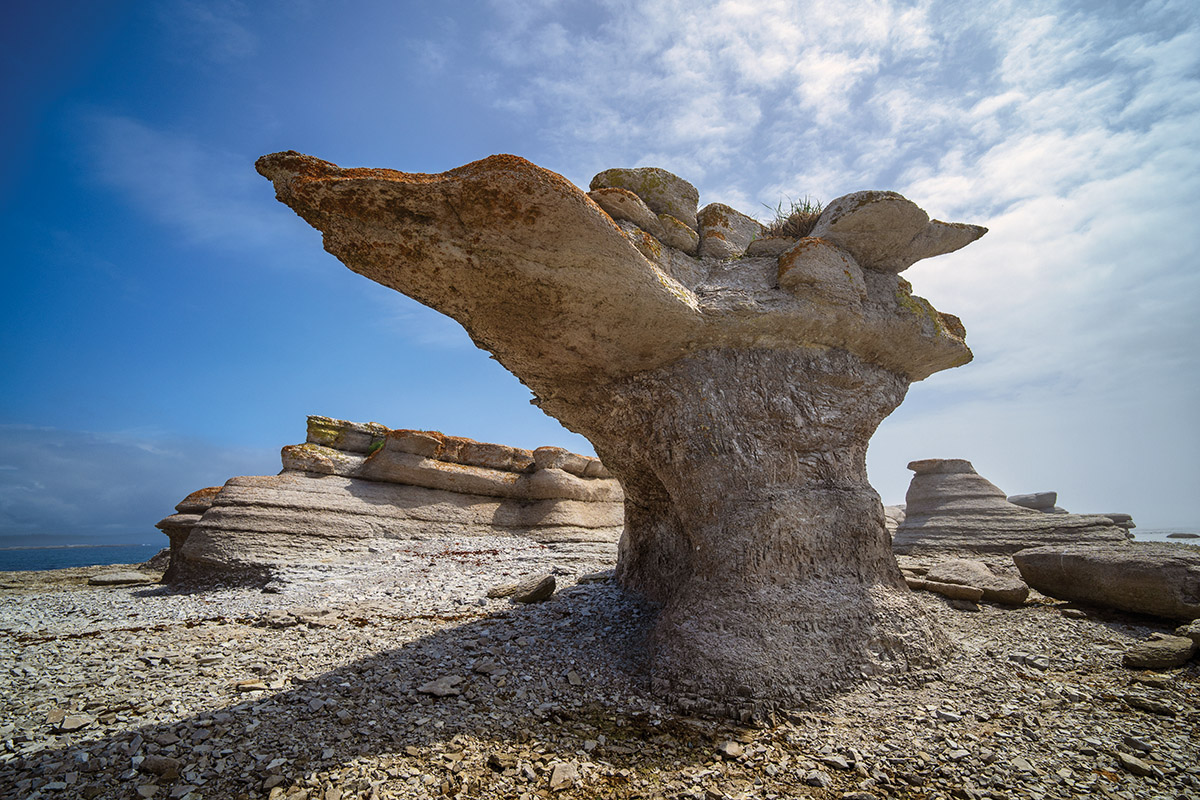
Resources
- For another Mingan experience, see our posting on Staying in a Lighthouse Surrounded by Puffins in Quebec’s Mingan Archipelago
- See the Parks Canada site for details on Mingan Archipelago National Park Reserve.
- For information on the many other attractions in this part of Quebec, see Quebec Maritime.


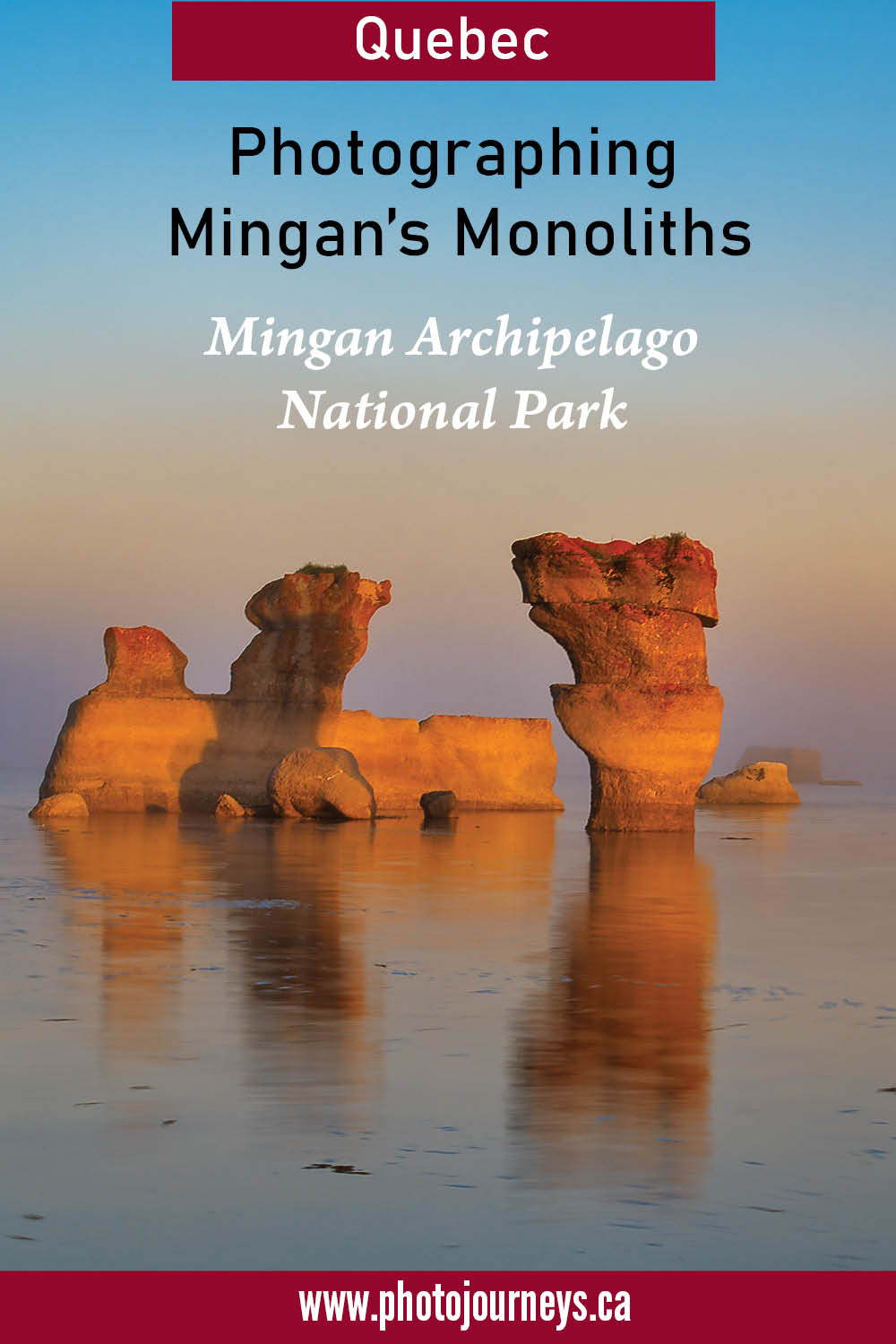
Wow!! Great images. I love long exposure the golden hour images. Thanks for the great information!
Thanks Amy. The key to getting the long exposures was being able to spend enough time on Quarry Island. We’re glad we stayed 4 nights and caught just the right conditions. Hope you get a chance to visit Mingan NP too.